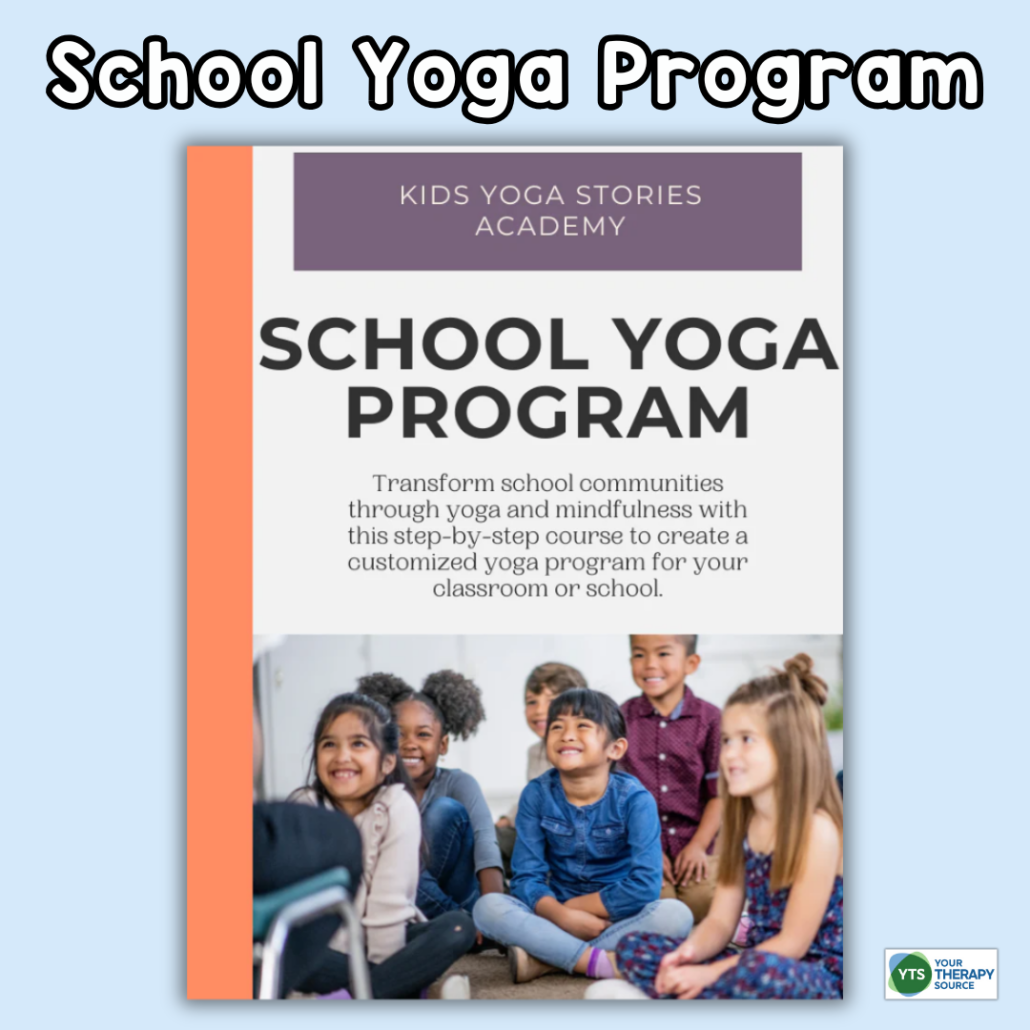How the School Yoga Program is Transforming Classrooms and Therapy Sessions
I’m Margaret Rice, PT, from Your Therapy Source, and I recently had the chance to sit down with Giselle Shardlow, M.Ed., from Kids Yoga Stories, to talk about the School Yoga Program. As a school-based physical therapist, I’ve seen firsthand how movement and mindfulness can help students with self-regulation, focus, and emotional well-being. But many therapists, counselors, and educators struggle with how to implement these strategies effectively in a school setting. (This post contains affiliate links). That’s where the School Yoga Program comes in. Giselle created this six-week training to provide school-based professionals with a clear, step-by-step plan to bring yoga and mindfulness into their schools. During our conversation, we discussed why this program is so effective, how it’s helping students, and what therapists and educators can do to start using these strategies right away.

Why the School Yoga Program Was Created
Giselle explained that she developed the School Yoga Program after noticing a common challenge among educators and therapists. Many had personal experience with yoga or mindfulness or had completed training in these areas, but they struggled to apply what they learned in real school environments.
After surveying professionals from different backgrounds, she identified some of the biggest obstacles to implementation:
- Limited time during the school day
- Lack of funding or resources
- Uncertainty about how to structure a program
- Hesitation from administrators, teachers, or parents
The School Yoga Program was designed to address these barriers by providing a clear framework that professionals can follow to integrate mindfulness and movement into their daily routines—without adding extra stress or workload.
Watch the Interview
How Yoga and Mindfulness Impact Students
Research has shown that balancing social-emotional learning with academics leads to better student success. During our conversation, Giselle shared insights from experts like Mark Brackett, author of Permission to Feel, who found that students who develop emotional regulation skills alongside their academic work perform better in school and in life.
Some of the key benefits of implementing yoga and mindfulness in schools include:
- Improved self-regulation and emotional control
- Increased focus and attention
- Stronger student-teacher relationships and social skills
- Enhanced creativity and critical thinking
- A calmer and more supportive school environment
Giselle also highlighted how today’s students are constantly exposed to digital distractions, screens, and overstimulation. Without structured moments of mindfulness and movement, they may struggle to regulate their emotions and engage in learning.
Real Success Stories from the School Yoga Program
The program has already helped therapists, counselors, and educators create meaningful changes in their schools. Some success stories include:
- A school counselor introduced Mindfulness Mondays, sharing guided mindfulness practices during morning announcements and giving teachers easy-to-use activities for the week.
- A physical education teacher started incorporating yoga into PE class warm-ups and cool-downs. After students responded positively, she developed a full-school yoga program and applied for a grant to expand it.
- An occupational therapist working in remote communities created a take-home yoga resource pack to help families integrate mindfulness and movement at home, ensuring long-term benefits beyond school hours.
These examples show how small, simple changes can lead to school-wide improvements in student behavior, engagement, and well-being.
What’s Included in the School Yoga Program
The six-week training includes everything professionals need to confidently bring yoga and mindfulness into their school communities. Participants receive:
- 12 training videos with step-by-step instruction
- 4 workbook guides with structured action plans
- Templates, checklists, and ready-to-use lesson plans
- 3 live coaching calls for Q&A and support
- A Yoga & Mindfulness 101 Course for beginners
- School Yoga Ambassador status for ongoing collaboration
Why This Program Supports Educators and Therapists
One of the most important takeaways from our conversation was that yoga and mindfulness don’t just benefit students—they also support the professionals implementing them. Educators, therapists, and counselors often experience stress and burnout, and incorporating these practices into their daily routines can help them as much as it helps their students.
Some of the ways the program supports school professionals include:
- Reducing stress and burnout
- Providing a structured, step-by-step approach to implementation
- Connecting participants with a supportive community of educators and therapists
- Offering tools to help professionals gain buy-in from administrators, teachers, and families
As we discussed in the interview, self-regulation starts with co-regulation. When therapists and educators model mindfulness, they create a learning environment where students feel safe and supported in developing their own emotional regulation skills.
How to Get Started
The School Yoga Program is designed for school-based professionals who want to integrate movement and mindfulness into their practice in a meaningful way. Spots are limited to ensure personalized support. To learn more or sign up, visit: School Yoga Program
More Helpful Resources
If you’re looking for additional yoga and mindfulness resources, check out these helpful tools from Your Therapy Source:
- 10-Minute Yoga for Kids
- Core Yoga Poses for Kids
- Yoga Games for Kids
- Breathing Exercise Cards for Kids
Yoga and mindfulness provide lifelong benefits for students, educators, and therapists. If you’ve used yoga in your school or therapy sessions, I’d love to hear about your experience. Drop a comment and share how it has helped your students!


